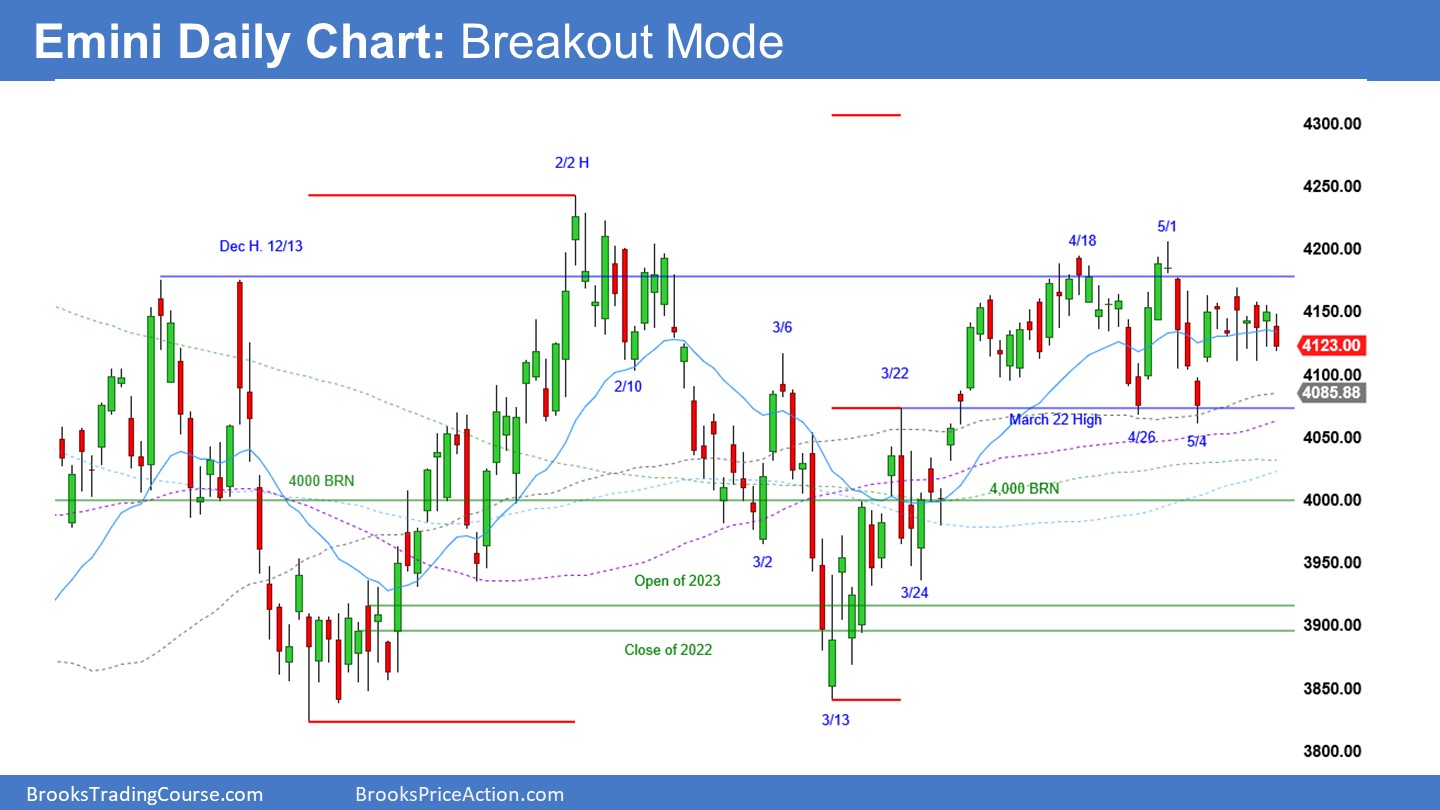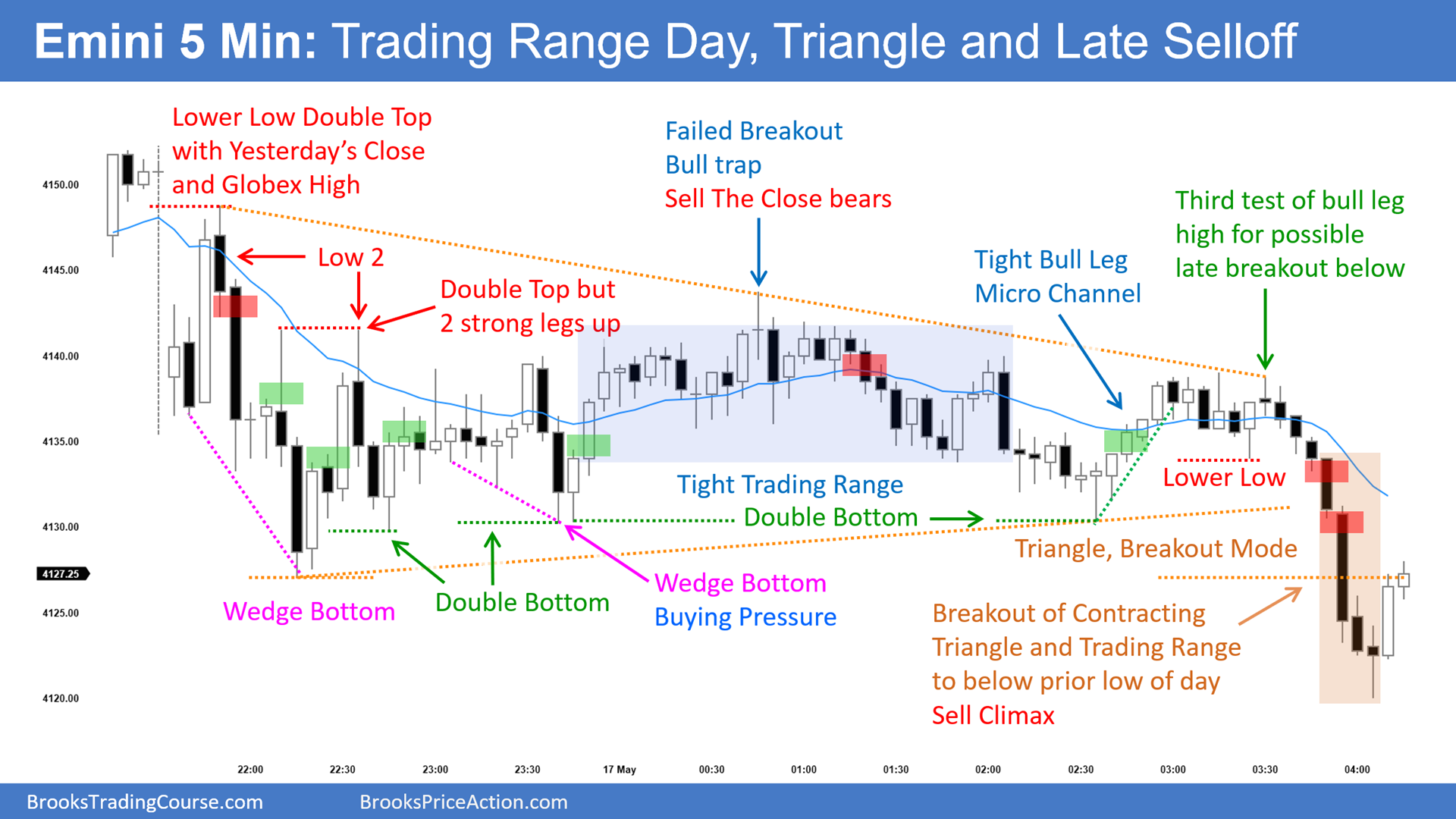
- The S&P 500 Futures is in a tight trading range, a breakout mode pattern and the Emini continues to disappoint traders betting on breakouts.
- The bears got a bear reversal bar closing on its low yesterday.
- However, just like all the other bars over the past two weeks, it is in the middle of a tight trading range. This makes a stop entry short below yesterday a low-probability trade.
- Traders should assume the probability of a breakout up or down is close to 50%.
- Eventually, there will be a breakout and a measured move of the month-long trading range.
- Until there is a clear breakout with follow-through, traders should assume that most breakouts will fail.
- The bears want to test the May 4th high since there are likely tapped bears who sold and scaled in higher. The bulls got trapped buying the May 1st high and likely scaled in lower.
- The most important thing on the daily chart is realizing that the market is in breakout mode and is oscillating around the 20-period exponential moving average blue line. Eventually, there will be a breakout; however, “Until there is a breakout, there is no breakout.”
Emini 5-minute chart and what to expect today
- Emini is up 13 points in the overnight Globex session.
- Since the market is in a tight trading range on the daily chart, traders should expect trading range price action during the U.S. Session until proven otherwise.
- As I often say, most traders should wait for 6-12 bars before placing a trade. It is important to realize that I say this as a guideline. Most opens have much trading range price action, making it easy to get trapped on the wrong side, betting on a breakout.
- By waiting for 6 – 12 bars, trading is gaining certainty on the type of day.
- In general, there is a 20% chance that bar 1 is the high or low of the day. The is around a 50% chance that bar 6 is either the high or the low of the day, and by bar 18, there is around a 90% chance that either the high or the low of the day has formed.
- There is often an opening swing that begins before the end of the second hour and often starts before the end of the second hour and typically after the formation of a double top/bottom or a wedge top/bottom.
- Lastly, traders should pay close attention to the day’s open. If the day is going to be a trading range, the day’s open will likely repeatedly be a magnet, similar to yesterday.
Yesterday’s Emini setups

Here are several reasonable stop-entry setups from yesterday. I show each buy entry with a green rectangle and each sell entry with a red rectangle. Buyers of both the Brooks Trading Course and Encyclopedia of Chart Patterns have access to a near 4-year library of more detailed explanations of swing trade setups (see Online Course/BTC Daily Setups). Encyclopedia members get current daily charts added to Encyclopedia.
My goal with these charts is to present an Always In perspective. If a trader was trying to be Always In or nearly Always In a position all day, and he was not currently in the market, these entries would be logical times for him to enter. These, therefore, are swing entries.
It is important to understand that most swing setups do not lead to swing trades. As soon as traders are disappointed, many exit. Those who exit prefer to get out with a small profit (scalp), but often have to exit with a small loss.
If the risk is too big for your account, you should wait for trades with less risk or trade an alternative market like the Micro Emini.
